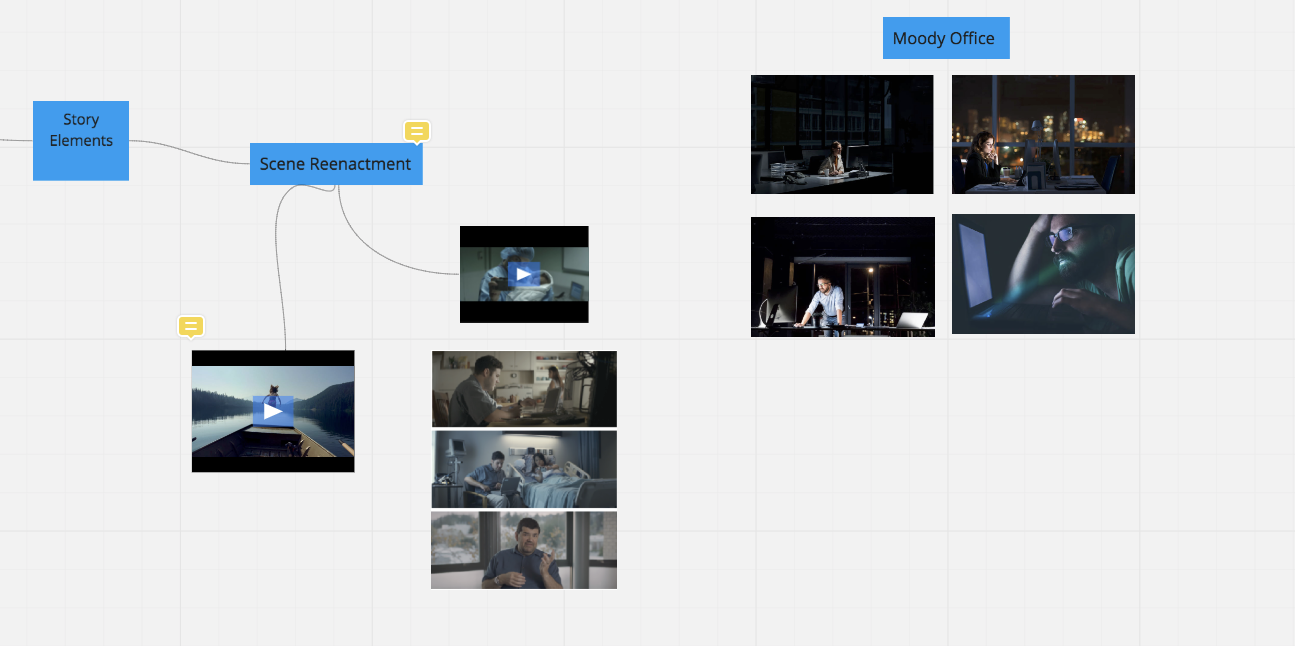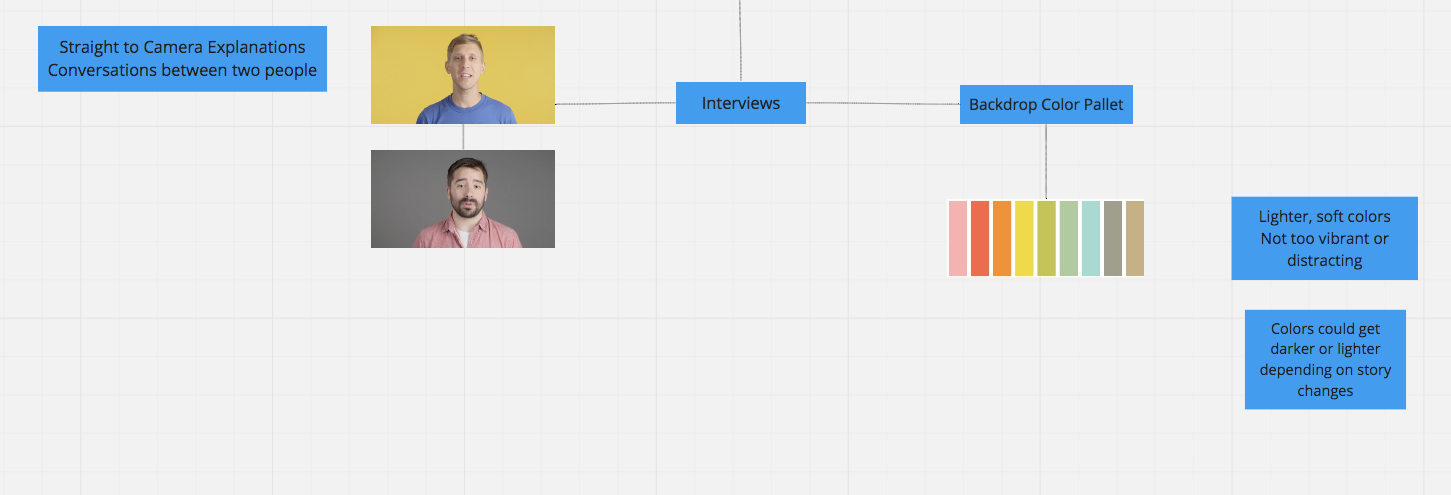Casey Stegman, writer, Eric Kramer, animator, and Kieran Moreira, director, talk about finding inspiration and setting the tone during the creative process. Casey discusses how they developed the style of the film, Kieran walks through the decision to use specific video equipment to support the overall style, and Eric considers how the graphics were integrated.
We've included a snapshot of the conversation, but you can also listen to the full conversation with our embedded player or download the MP3.
Casey: We were looking around for different sources of inspiration. One film was The Big Short, was about the 2008 financial crisis. But it’s not as down and dour as you would think. In fact, Adam McKay, the writer and director for that film— his background was doing a lot of Will Ferrell movies—decided, “Hey, I’m going to take the financial crisis and tell my audience about each aspect of it.” But not in a way that dumbed it down for audiences who maybe understood a little bit more about the financial crisis.


Inspiration for the visual style. Photo credit: Kieran Moreira.
So they would have these asides when they brought up a subject—like credit default swaps—where you’d have an expert turn to camera and break the fourth wall* and explain it using analogies and metaphors that were understandable but also kind of playful in the explanation.

Orran Krieger in Creating ChRIS chapter 2
Kieran: Because it was so important that we had our subjects look at camera, that kind of led us down the path of using a new piece of equipment we’d never used before, which is called an EyeDirect. It is basically a piece of equipment that you place in front of the camera, and it reflects the interviewer’s face onto the lens.
Typically, you have your subject look at the cold barrel of the lens, which can seem impersonal, and your subject’s always darting their eyes away. This device locks them in because you’re looking at the person you’re talking to. It was critical that we have our subjects be comfortable and feel like they were having a conversation with the audience.

Testing the EyeDirect with Brett Abramsky. Photo credit: Kieran Moreira
 Rachel Rooney makes adjustments during Orran’s interview. Photo credit: Kieran Moreira
Rachel Rooney makes adjustments during Orran’s interview. Photo credit: Kieran Moreira
And another idea we thought could be useful in this style was using a green screen for the interviewees’ backdrops.
Eric: Cutting out the green screen is certainly harder than just shooting on a colored background. It allowed us more flexibility and more leverage to change the background out. If the colors were too extreme and not working, we were able to layer in the graphics that made the subjects feel more part of a cohesive world. Some of those colors were just really bright when they came through on the screen after color correction, and it made it hard to see some of the graphics that were there.


Examples of the graphics from the Creating ChRIS video series
We had to walk the line of a serious topic but also with a more playful kind of style. We didn’t want to go too dark and heavy, but we also didn’t want to go so fun and playful that the subject couldn’t be taken seriously.
Creating ChRIS is a video series from Red Hat that shows what happens when passionate visionaries and open technologies come together. Born out of a tight partnership between Boston Children’s Hospital, the Massachusetts Open Cloud (MOC), and Red Hat, the series follows a group of researchers as they develop the ChRIS Research Integration System—an open source, web-based medical imaging platform that greatly increases the speed at which medical professionals can analyze medical images such as MRIs.
This is part two of a five-part blog series that goes behind the scenes on several aspects of the project. (See part one.) Follow the Open Studio blog for the rest of the series coming soon.
Sobre o autor
Navegue por canal
Automação
Últimas novidades em automação de TI para empresas de tecnologia, equipes e ambientes
Inteligência artificial
Descubra as atualizações nas plataformas que proporcionam aos clientes executar suas cargas de trabalho de IA em qualquer ambiente
Nuvem híbrida aberta
Veja como construímos um futuro mais flexível com a nuvem híbrida
Segurança
Veja as últimas novidades sobre como reduzimos riscos em ambientes e tecnologias
Edge computing
Saiba quais são as atualizações nas plataformas que simplificam as operações na borda
Infraestrutura
Saiba o que há de mais recente na plataforma Linux empresarial líder mundial
Aplicações
Conheça nossas soluções desenvolvidas para ajudar você a superar os desafios mais complexos de aplicações
Programas originais
Veja as histórias divertidas de criadores e líderes em tecnologia empresarial
Produtos
- Red Hat Enterprise Linux
- Red Hat OpenShift
- Red Hat Ansible Automation Platform
- Red Hat Cloud Services
- Veja todos os produtos
Ferramentas
- Treinamento e certificação
- Minha conta
- Recursos para desenvolvedores
- Suporte ao cliente
- Calculadora de valor Red Hat
- Red Hat Ecosystem Catalog
- Encontre um parceiro
Experimente, compre, venda
Comunicação
- Contate o setor de vendas
- Fale com o Atendimento ao Cliente
- Contate o setor de treinamento
- Redes sociais
Sobre a Red Hat
A Red Hat é a líder mundial em soluções empresariais open source como Linux, nuvem, containers e Kubernetes. Fornecemos soluções robustas que facilitam o trabalho em diversas plataformas e ambientes, do datacenter principal até a borda da rede.
Selecione um idioma
Red Hat legal and privacy links
- Sobre a Red Hat
- Oportunidades de emprego
- Eventos
- Escritórios
- Fale com a Red Hat
- Blog da Red Hat
- Diversidade, equidade e inclusão
- Cool Stuff Store
- Red Hat Summit

